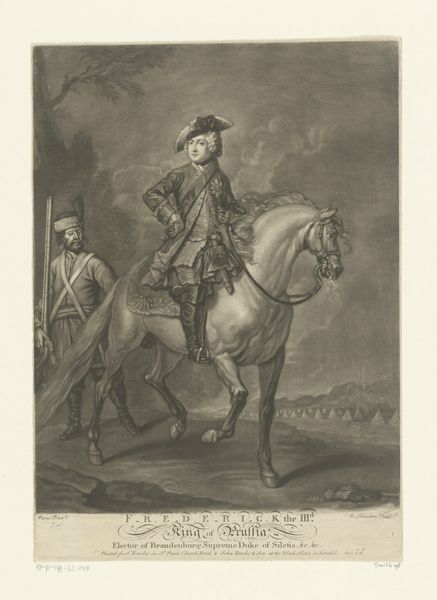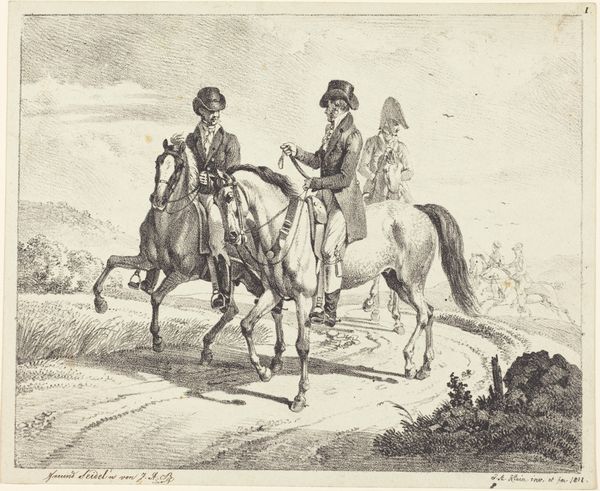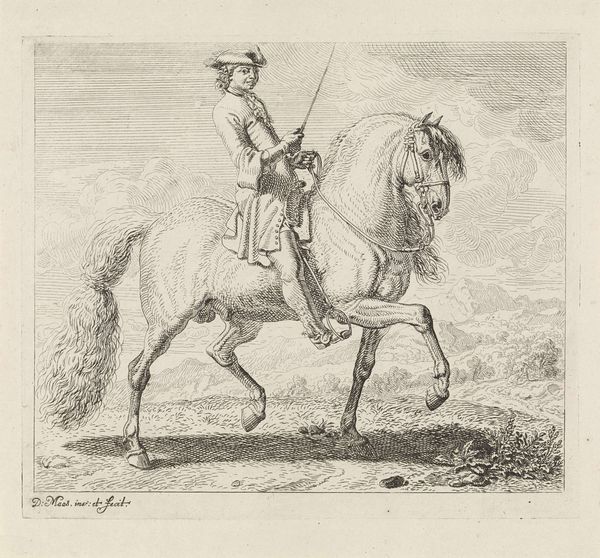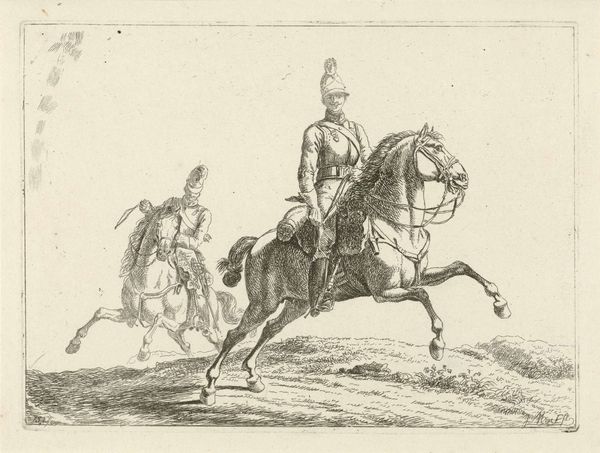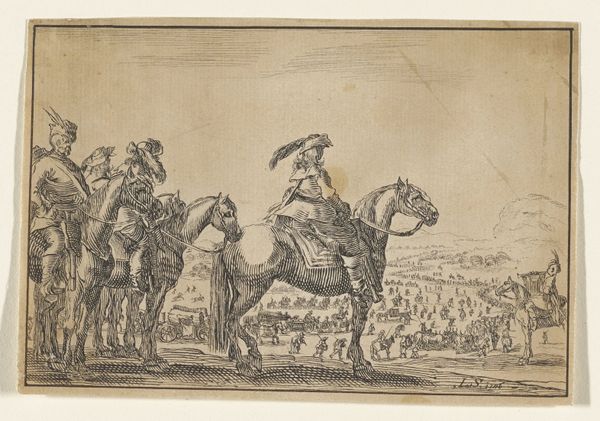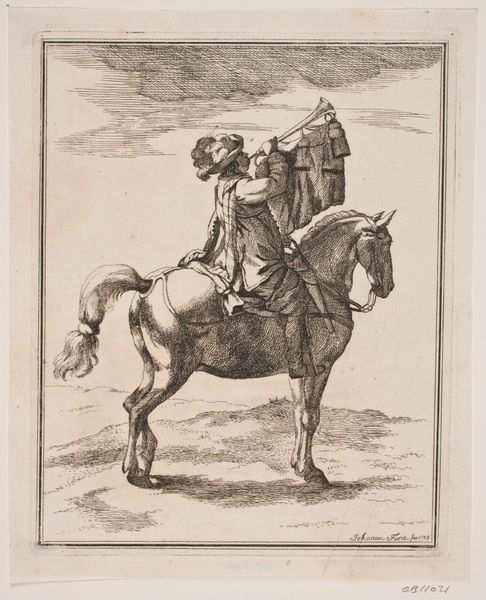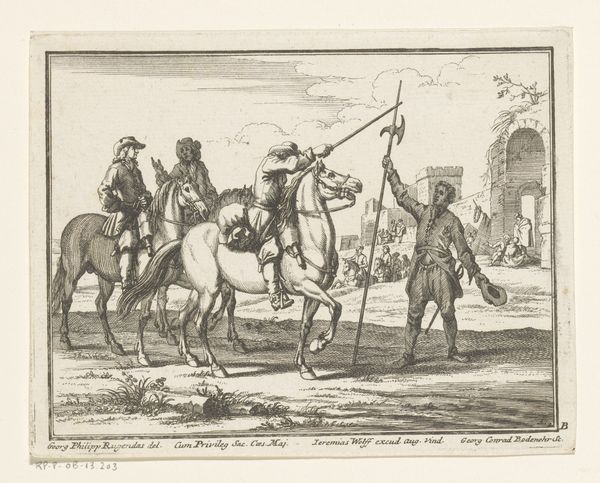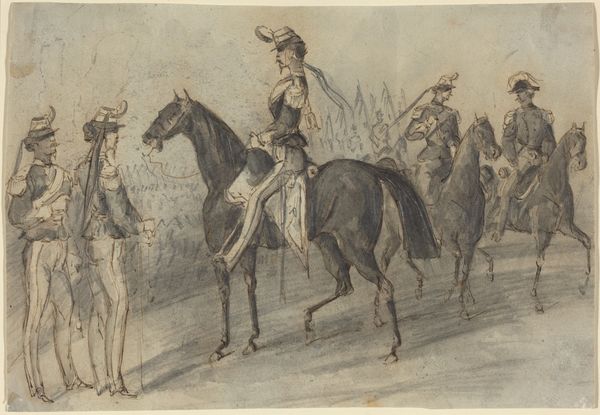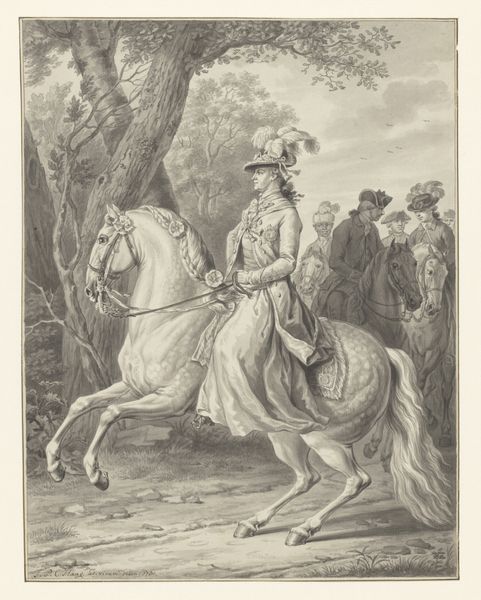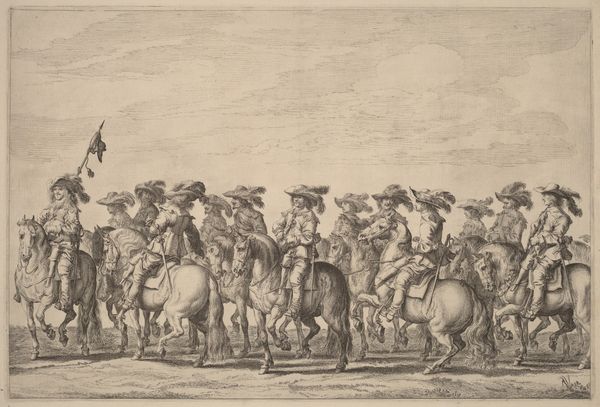
drawing, paper, pen
#
portrait
#
drawing
#
landscape
#
figuration
#
paper
#
pen
#
genre-painting
#
history-painting
#
rococo
Dimensions: height 207 mm, width 184 mm
Copyright: Rijks Museum: Open Domain
Editor: So, we’re looking at "The Young Prince William V on Horseback, with Entourage," a pen drawing on paper made in 1762 by Tethart Philip Christian Haag. It has this grandiose yet somehow fleeting quality… what strikes you most when you look at it? Curator: Fleeting, yes! It feels like catching a memory. The hazy lines, the almost washed-out colours… Haag really captured that Rococo lightness, didn't he? What’s interesting to me is how it portrays power. A young prince, elevated on horseback, surrounded by his men…yet it's all so…delicate. Not at all the strong, confident image we might expect. What do you think that tells us? Editor: That’s true! It doesn't scream 'absolute power' the way some portraits of monarchs do. It's more…celebratory, like a festive occasion. Almost dreamlike. Is that common for art of this era? Curator: Well, yes and no. Equestrian portraits were traditionally about projecting authority. But the Rococo was all about moving away from those grand statements towards something more intimate, more playful. Maybe Haag was intentionally softening the image of royalty for the changing times? A kind of PR exercise, 18th century style. It makes me wonder, what was William V actually like? Editor: Interesting! It adds a whole new layer to consider. Now, when I look at this piece, it seems less about immortalizing power, and more about a single, charming moment in time. I will need to re-evaluate what I think of equestrian portraits from now on. Thanks! Curator: My pleasure! It's all about seeing with fresh eyes, isn’t it? And questioning those easy assumptions.
Comments
No comments
Be the first to comment and join the conversation on the ultimate creative platform.

